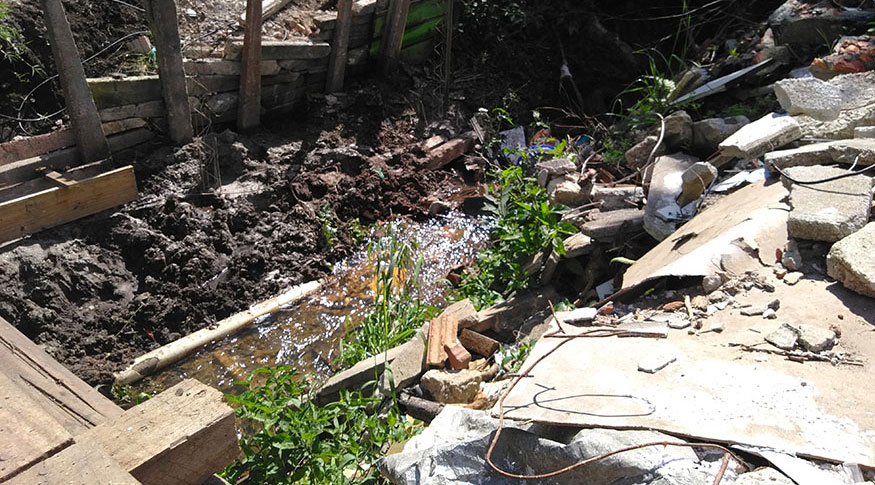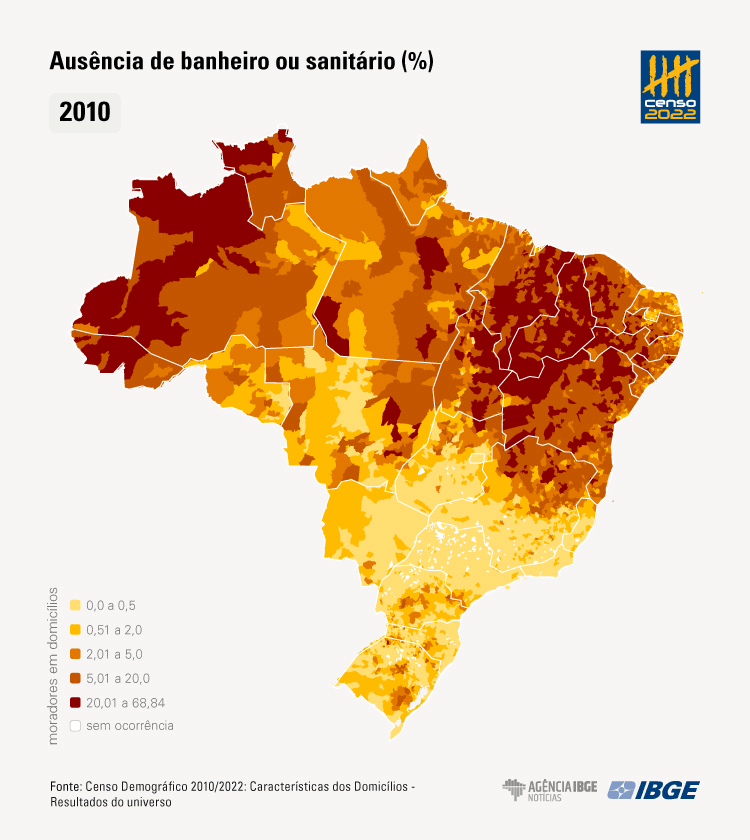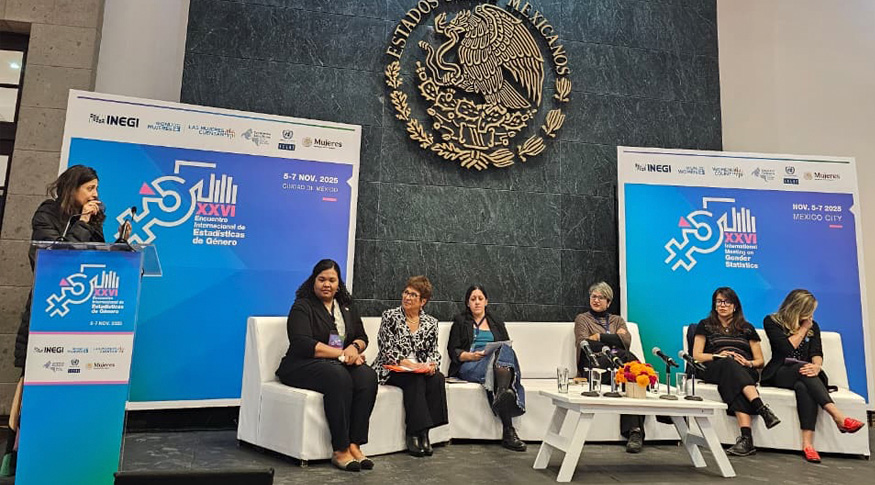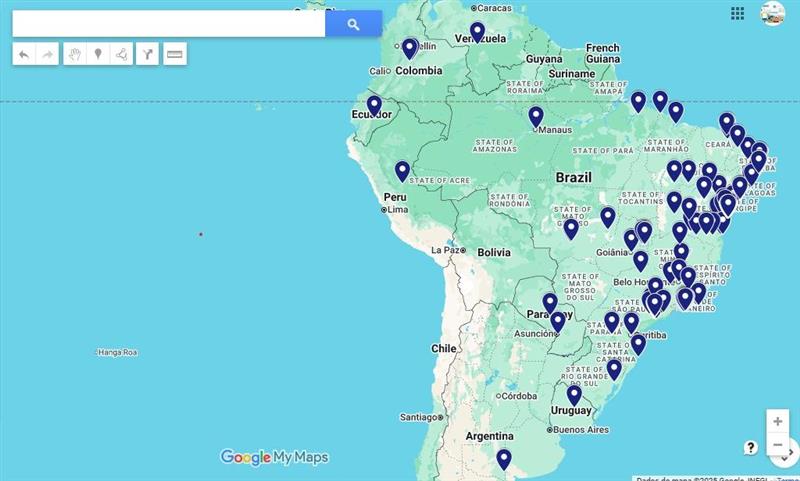2022 Census
2022 Census: sewerage reaches 62.5% of the population, but regional inequalities and inequalities by color and race persist
February 23, 2024 10h00 AM | Last Updated: February 27, 2024 05h37 PM
Highlights
- Population Census shows that 62.5% of Brazil's population lived in housing units connected to the sewage collection network in 2022. This rate was 44.4% in 2000 and rose to 52.8% in 2010.
- Considering those who lived in housing units with sewage system or septic tank, the values were 59.2% in 2000, 64.5% in 2010 and 75.7% in 2022.
- Between 2010 and 2022, all Federation Units (FUs) recorded an increase in the proportion of the population living in housing units with sewage collection and in the proportion of inhabitants living in housing units with sewage through a collection network or septic tank. Mato Grosso do Sul (34.8 percentage points) was the state with the highest growth in this last indicator.
- In 2022, 3,505 Brazilian municipalities had less than half of the population living in housing units with sewage collection, while in 2,386 municipalities, less than half of the inhabitants lived in housing units with sewerage through a collection system or septic tank.
- In 2022, 97.8% of the population had at least one bathroom for exclusive use. Bathrooms shared by more than one housing unit were reported by 0.5% of the population. On the other hand, 0.6% of the population lived in housing units without bathrooms, toilets or waste holes.
- Direct or indirect waste collection served 90.9% of the population in 2022. The most frequent types of disposal were “Collected at home by cleaning service” (82.5%) and “Disposed in a cleaning service bin” (8.4%).
- São Paulo (99.0%) had the highest percentage of population served by waste collection, while Maranhão (69.8%) recorded the lowest. Maranhão was the state that most expanded its waste collection coverage (16.3 percentage points) between 2010 and 2022.
- Restrictions on access to basic sanitation, in 2022, were greater among youngsters, black, brown and Indigenous persons. The population of yellow color or race was the one with the highest rate of access to sanitation infrastructure, followed by those of white color or race.

The proportion of housing units with access to the sewage collection system in Brazil reached 62.5% in 2022, registering an increase compared to 2000 (44.4%) and 2010 (52.8%). Data from the 2022 Population Census reveal that the two most common sewerage solutions in Brazil were “General or rainwater networks” (58.3%) and “Septic tank or filter tank not connected to the network” (13.2%), an individual solution not connected to the network, but considered adequate by the National Basic Sanitation Plan (PLANSAB). “Septic tank or filter tank connected to the network” represented 4.2%. On the other hand, 49.0 million persons (24.3%) still used precarious sewerage resources.
These pieces of information were published today (23) by the IBGE in the release “2022 Census: Characteristics of Housing Units - Results from the universe”. The release event, in partnership with Diadema City Hall and the Great ABC Intermunicipal Consortium, takes place today (02/23), at 10 am, at Clara Nunes Theater, located at Rua 300, Graciosa St.
The event will also be broadcast live by Digital IBGE, and posted on the Institute’s social media (YouTube, Instagram, Facebook and TikTok). You can also read the news on types of housing units and forms of water supply in the 2022 Population Census.
“Among the services that make up basic sanitation, sewage collection is the most difficult, as it requires a more expensive structure than the others. The 2022 Census reflects this, showing an expansion of sanitary sewage in Brazil, but with even lower coverage than water distribution and waste collection”, explains Bruno Perez, suruvey analyst.
Considering the three appropriate forms according to PLANSAB (General or rainwater network, septic tank or filter tank connected to network and septic tank or filter tank not connected to network), that is, all those who lived in housing units with drainage through a collection network or septic tank, the values were 59.2% in 2000, 64.5% in 2010 and 75.7% in 2022.
The remaining 24.3% (49.0 million persons) lived in a total of 16.4 million housing units with precarious sewerage solutions. The "rudimentary septic tank or hole" was the form of sewage disposal for 19.4% of the population. Next, comes direct disposal in "rivers, lakes, streams or sea" (2.0%), disposal through "ditches" (1.5%) and "other ways of disposal" (0.7%).
Southeast residents are more served by a sewage collection network
The Southeast region (86.2%) had the largest portion of population living in housing units with sewage collection. In turn, the North region (22.8%) showed the lowest rate in this indicator. Among the Federation Units, the highlights on the positive and negative sides were, respectively, São Paulo (90.8%) and Amapá (11.0%).
In the comparison between 2010 and 2022, all Federation Units registered an increase in the proportion of the population living in housing units with sewage collection and in the proportion of the population living in housing units with sewage through a collection network or septic tank. In this last indicator, the greatest increase was recorded in Mato Grosso do Sul (34.8 percentage points), going from 37.7% in 2010 to 72.5% in 2022.
In municipal terms, São Caetano do Sul (SP), Júlio Mesquita (SP) and Vitória (ES) were the cities that presented the highest rates of population served by a sewage collection network with, respectively, 99.95%, 99 .81% and 99.65%.
Despite the advances observed, 3,505 Brazilian municipalities had less than half of the population living in housing units with sewage collection, while in 2,386 municipalities, less than half of the residents lived in housing units with sewerage through a collection system or septic tank.
The proportion of the population residing in housing units with sewage systems was related to the size of the population in the municipalities: in municipalities with up to 5,000 residents, only 28.6% of them lived in housing units with sewage collection. This number rises gradually according to each population size class, to reach 83.4% in municipalities with 500,001 residents or more.
“The existence of the sewerage is related to the population size of each municipality. There is a tendency for municipalities with more than 500,000 residents to have a more robust sewerage. This occurs, in part, due to the difficulty of implementing the service in places with a lower population density, requiring a larger network to reach the same number of persons in a larger municipality”, says Mr. Perez.
97.8% of the population lived in housing units with at least one exclusive bathroom
The bathroom (room with toilet and bathing facilities) which, on a daily basis, was used only by the residents of the housing units and their guests was classified as “for exclusive use”. In 2022, there was at least one bathroom for exclusive use in 71.0 million housing units, where 197.5 million persons lived. The number corresponds to 97.8% of the Brazilian population.
“The existence of bathrooms in Brazilian housing units has been increasing. The 2010 Census had recorded that 92.3% of the population lived in housing units with exclusive bathrooms. In 2022 this index grew 5.5 percentage points. The number of bathrooms in each housing unit has also increased. In 2010, 71.5% of housing units with an exclusive bathroom had only one bathroom, a proportion which fell in 2022 to 66.3%, indicating an increase of 5.2 percentage points in the share of housing units with two or more bathrooms”, observes Mr. Perez.
The number of housing units where there are no bathrooms, toilets or waste holes was 367 thousand. 1.2 million peorsons lived in these homes, equivalent to 0.6% of the population. Piauí (5.0%), Acre (3.8%) and Maranhão (3.8%) were the Federation Units with the highest rates.
In 24 Brazilian municipalities, the proportion of the population residing in housing units with exclusive bathrooms was less than 50%. In 668 municipalities, this rate was less than 90%. On the other hand, in 415 municipalities, all occupied permanent private housing units registered had a bathroom for exclusive use.
In relation to the simplest sanitary facilities, in 1,529 municipalities all registered housing units had at least a toilet or waste hole, while in 169 municipalities more than 10% of the population lived in housing units without a bathroom, toilet or waste hole.

Direct or indirect waste collection reached 90.9% of the population
The destination of waste was another characteristic of housing units surveyed by the 2022 Census. The most frequent type of disposal was “Collected at home by cleaning service”, with 82.5% of the population living in housing units in which this was the destination of the waste. In second place comes “Deposited in a cleaning service bin”, carried out by 8.4% of the population. These two categories, together, correspond to housing units with waste collection. In 2022, 90.9% of the population lived in housing units with direct or indirect waste collection. The remaining 9.1% used local or individual solutions for waste disposal.
The household waste of 7.9% of the population was “Burned on the property”, while 0.3% of it was “Buried on the property”. According to 0.6% of the population, trash was only “Thrown on vacant land, slopes or public areas”. The 2022 Census also recorded the occurrence of “Other ways of disposal” for household waste, covering 0.3% of the population.
The highest proportion of direct or indirect waste collection was recorded in São Paulo (99.0%), and the lowest in Maranhão (69.8%). In relation to 2010, Maranhão was the Federation Unit that most expanded its waste collection coverage, with an expansion of 16.3 percentage points in the proportion of the population served, a result that, however, was not enough to take it away from the last position in that indicator.
“The extensive national coverage of waste collection services can be explained, to a great extent, by the fact that it requires a relatively simple infrastructure to be carried out. However, there is still significant regional inequality, as in the case of Maranhão”, adds Mr. Perez. The population rate served by direct or indirect waste collection has increased with each census operation. In 2000, 76.4% of the population had access to waste collection, a percentage that rose to 85.8% in 2010 to reach 90.9% in 2022.
Data from the 2022 Census show that, in general, access to waste collection is more limited in municipalities with a smaller population. In those with less than 5,000 inhabitants, only 78.9% of the population lived in housing units with waste collection. However, in municipalities with 500,001 or more inhabitants, waste collection reached 98.9% of persons. Santa Cruz de Minas (MG), Águas de São Pedro (SP) and Presidente Lucena (RS) were the cities with the highest rates of population served by waste collection, all with 100.0% coverage.
The municipalities with the greatest restrictions on waste collection were those with less than 5,000 inhabitants in the Northeast Region, in which 68.3% of persons lived in housing units with waste collection. In 455 municipalities, in the five Major Regions of the country, less than half of the population was served by direct or indirect waste collection.
Lack of access to basic sanitation mainly affected youngsters, black, brown and Indigenous persons
In 2022, younger age groups showed a higher incidence of precarious access to basic sanitation. In the population between 0 and 4 years old, 3.4% lived in housing units without water pipes; in the group aged 60 or over, this proportion was 1.9%. Regarding the absence of a bathroom, toilet or waste hole in housing units, the rates obtained were 0.9% in the group between 0 and 4 years old, and 0.4% in the group aged 60 and over.
The scope of public sanitation services, such as water supply, sewage collection and waste collection, was also related to the age group, recording lower rates for younger age groups. The proportion of the population living in housing units with water supply, mainly from the general network, was 80.9% in the group between 0 and 4 years old, and 83.5% in the group aged 60 and over.
In relation to direct or indirect waste collection, the difference was smaller, but again there was an advantage for the older age group: 89.5% in the group between 0 and 4 years old, and 90.8% in the group aged 60 and over. The sharpest disparity was in the proportion of the population residing in housing units with sewerage through a collection network or river network (including septic tank connected to the network): 57.3% in the group between 0 and 4 years old, and 66.3% in the group aged 60 years old and over.
The 2022 Census also revealed that persons of yellow color or race, followed by persons of white color or race, had the highest proportions of connection to basic sanitation service networks and the highest rate of presence of sanitary facilities in their housing units. Persons of black, brown and Indigenous color or race had smaller proportions.
“This scenario is linked to the regional distribution of the groups, with a greater presence of black, brown and Indigenous persons in the North and Northeast, regions with less sanitation infrastructure. In all of the 20 most populous Brazilian municipalities, the population of white color or race has more access to water supply, sanitation and waste collection than the population of black, brown and Indigenous color or race,” concludes Mr. Perez.
Diadema and the ABCD region of São Paulo
In his presentation of the results, the IBGE analyst also presented the indicators of the three sanitation services for the municipality of Diadema and the ABCD region of São Paulo. The 2022 Census investigated that, in Diadema, 99.8% of residents received water supply from the general network. 98.8% of residents were served by sewerage services through a collection network or rainwater network, and 99.7% of the population was reached by sewerage services.
For the region called by the institute the “Southeast Sub-Region of the Metropolitan Area of São Paulo”, covering Santo André, São Bernardo do Campo, São Caetano do Sul, Diadema, Mauá, Ribeirão Pires and Rio Grande da Serra, 98.9% of the population was served by water supply through a general network, 95.0% had sewage systems through a collection or rainwater networks and 99.7% were served by a waste collection service.
"Diadema's result is well above the national average, both for water supply and sanitary sewage. When we analyzed the municipalities with over 200,000 inhabitants, Diadema had the highest rate of water supply and the second highest of sanitary sewage. We are making data available for all Brazilian municipalities, but here we brought some data from our hosts in Diadema.”
More about the survey
The 2022 Population Census: Characteristics of housing units - Results from the universe brings information regarding the form of water supply, disposal of waste, type of sewage system, existence of a bathroom or toilet and existence of water pipes, allowing a characterization of important elements of the homes and living conditions of the population. Data is available for Brazil, Major Regions, states and municipalities. The pieces of information will also be disaggregated according to color or race and age groups of population. Moreover, data can be viewed on the Interactive Geographic Platform (PGI) and in the 2022 Census overview.

















